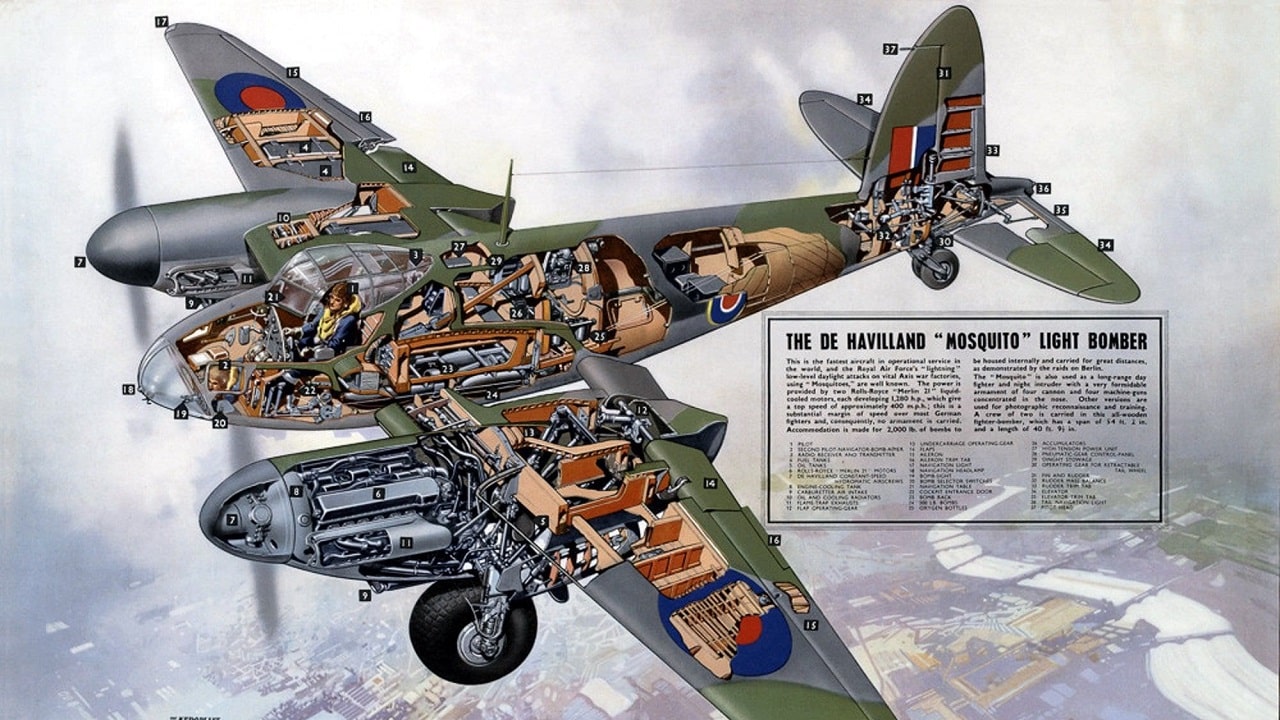The de Havilland Mosquito might just be the best World War II plane many have never heard of. During the Second World War, a total of 7,781 de Havilland Mosquito combat aircraft were produced. However, today just 30 of the British twin-engine multi-role “Wooden Wonders” remain, and only four are reportedly airworthy. Most of the surviving Mosquitos are on display in museums around the world – and this includes the Royal Air Force Museum in London, and the National Museum of the United States Air Force in Dayton, Ohio.
A mere handful of the World War II fighter/bombers are now in private hands.
In 2019, Mosquito Aircraft Restoration Limited, which had restored at least four of the aircraft to airworthiness, offered a Mosquito for sale. The asking price at the time was $7.25 million. Given the rarity of the aircraft, the price could have been considered a bargain– even if it was $3 million more than what actor Brad Pitt paid for his former RAF Spitfire a few years ago.
The Legendary de Havilland Mosquito
Known as “Mossie” or the “Wooden Wonder,” the de Havilland Mosquito was one of the more unique combat aircraft to see service during the Second World War. Developed originally as a two-seater, unarmed fast bomber, the aircraft was subsequently utilized as a fighter, fighter-bomber, night fighter, U-Boat hunter, and even reconnaissance aircraft. As a result, the Mosquito became one of the first true multi-role combat airplanes.
The airframe was made mainly of wood – hence the Wooden Wonder moniker – due to the fact that metal was in short supply, while the specialists with the skills to work with metals were already employed on the construction of battleships, submarines and shells for bombs. There had been a large supply of wood throughout the British Empire, and no shortage of skilled carpenters and cabinet makers who were called in to help with the production of the wooden plane.
de Havilland Mosquito – Key Details
English aviation pioneer Geoffrey de Havilland had actually begun development of the aircraft in 1936 when the Air Ministry had first called for designs for a new fast medium bomber that would be capable of carrying a 3,000-pound bomb load and have a range of 3,000 miles. At the time, most manufacturers submitted designs for heavy bombers with four-engines and defensive turrets. While the Air Ministry was initially skeptical of a wooden aircraft, de Havilland pressed forward – and the result was a fighter/bomber that featured technology and aerodynamics far more advanced than the Spitfire’s.
The Mosquito only arrived after the Battle of Britain, yet it became the right aircraft as the RAF took the fight to Germany. When it entered service in 1941, it was one of the fastest operational aircraft in the world.
By the end of the Second World War, Mosquito pilots scored more than 600 confirmed kills against enemy aircraft. It could carry four 500 pound bombs, while a later version – the Mark IX – doubled the bomb load. The Mosquito was also fully-loaded with cannons and machine guns. The aircraft saw service with the RAF and other air forces in the European, Mediterranean and Italian theaters of operation. It was also employed in the Southeast Asian Theater, where it was flown by the RAF and Royal Australian Air Force.
de Havilland Mosquito – The End
Production of the Wooden Wonder even continued after the end of the war, and the final Mosquito was produced in 1950. The biggest downside of the use of wood in its construction is that after the war, many surviving Mosquito aircraft simply rotted away in their hangers – which makes the few available in private collections almost priceless.
Peter Suciu is a Michigan-based writer who has contributed to more than four dozen magazines, newspapers and websites. He regularly writes about military small arms, and is the author of several books on military headgear including A Gallery of Military Headdress, which is available on Amazon.com.

